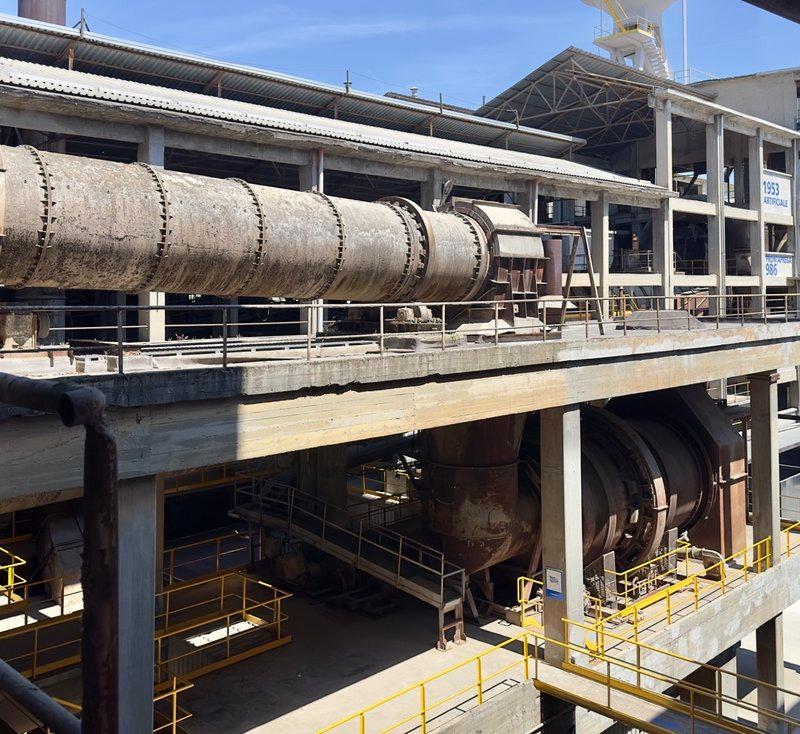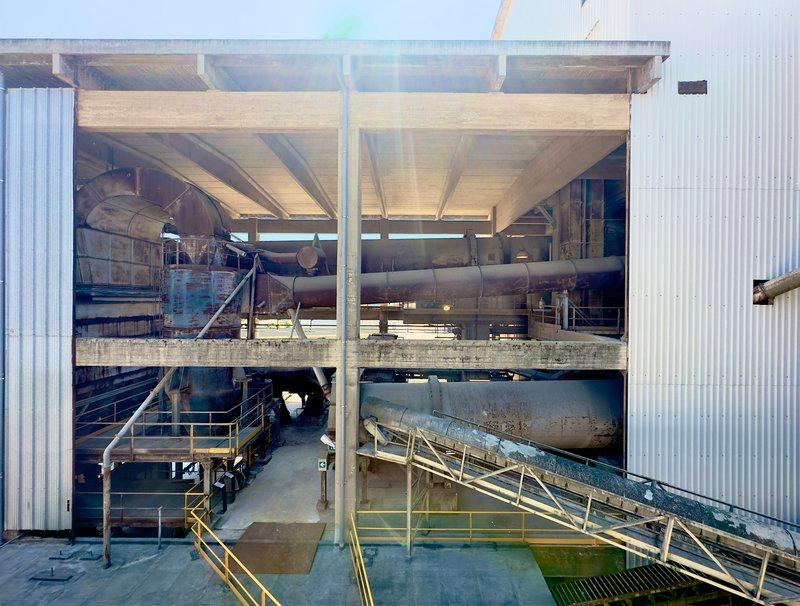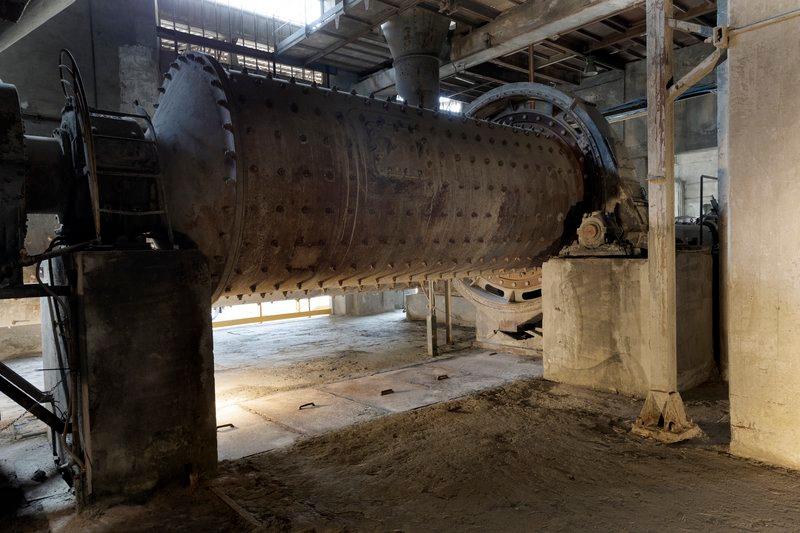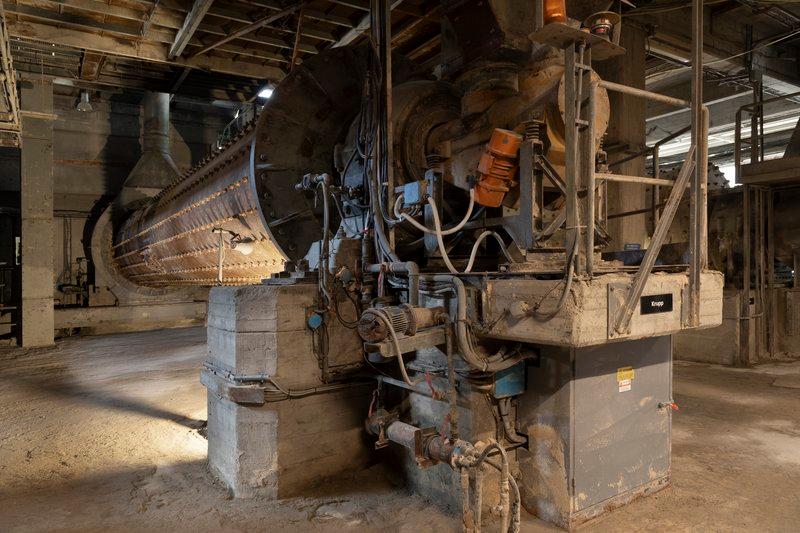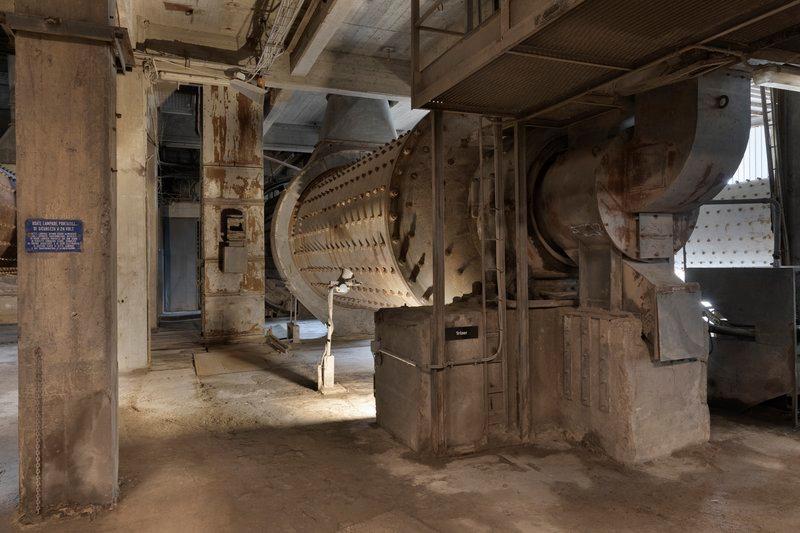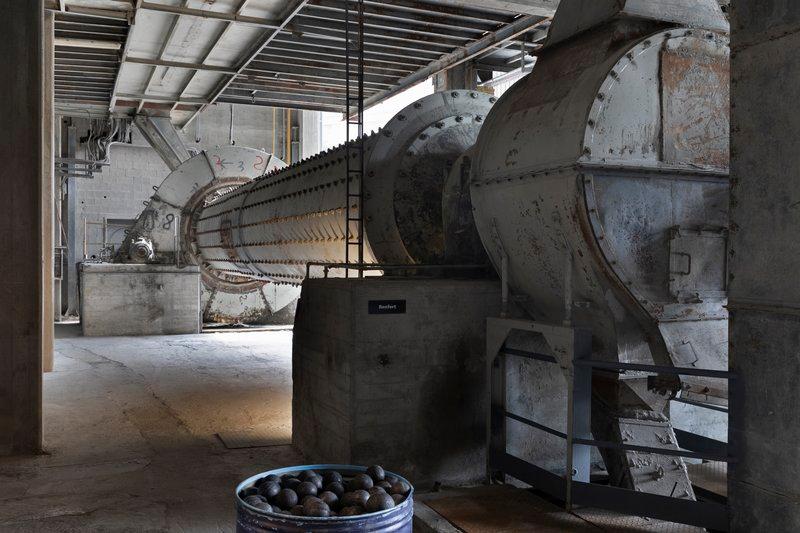A pair of Lepol-type horizontal rotary kilns for the production of artificial cement, each with a nominal production capacity of 250 tons/day, manufactured by the Polysius-Neubeckum firm (formerly Polysius-Deasau) in 1955 and 1959, respectively. The kiln tube of each Lepol is 32 ml long, with a diameter of 2.80 mt and an incline of 3.5%. The tube is supported on two rolling stations equipped with two rollers each; the upper station also includes two vertical-axis thrust rollers.
Pa.Vo. (acronym for Pazienza [Patience] and Volontà [Willingness]) and Fo.Co. (acronym for Forza [Strength] and Coraggio [Courage]) produced cement clinker from marly and tuffaceous limestone that had been appropriately mixed, ground and homogenized. Equipped with a mobile grate heat exchanger that prepared the material for sintering and then burning by pragmatically using the heat from the combustion fumes, for the same production yield the Lepol kilns operated with greater thermal efficiency and a shorter kiln tube than the standard rotary kilns at that time. They were innovative in that they could also be powered by methane.
Forni cemento 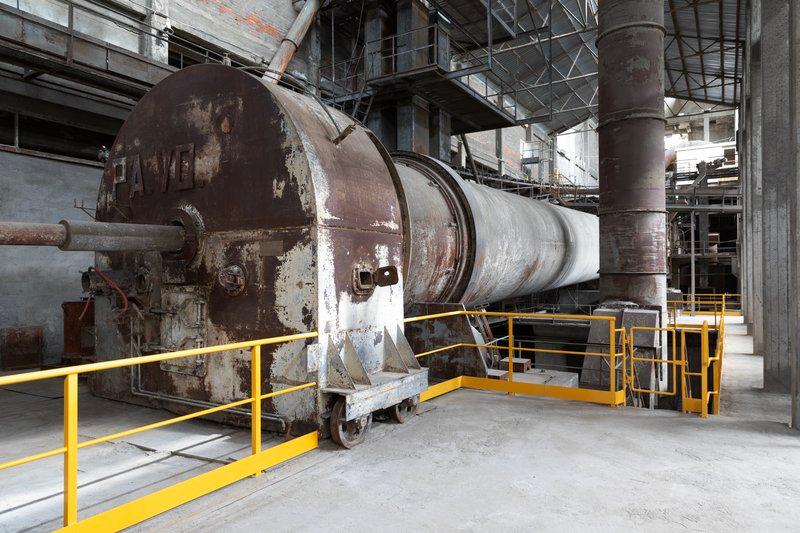
Forni cemento 


